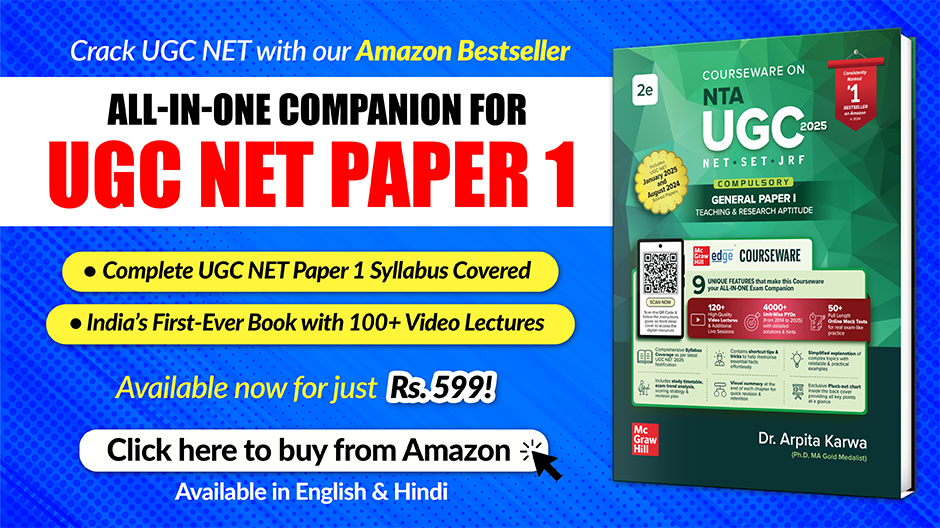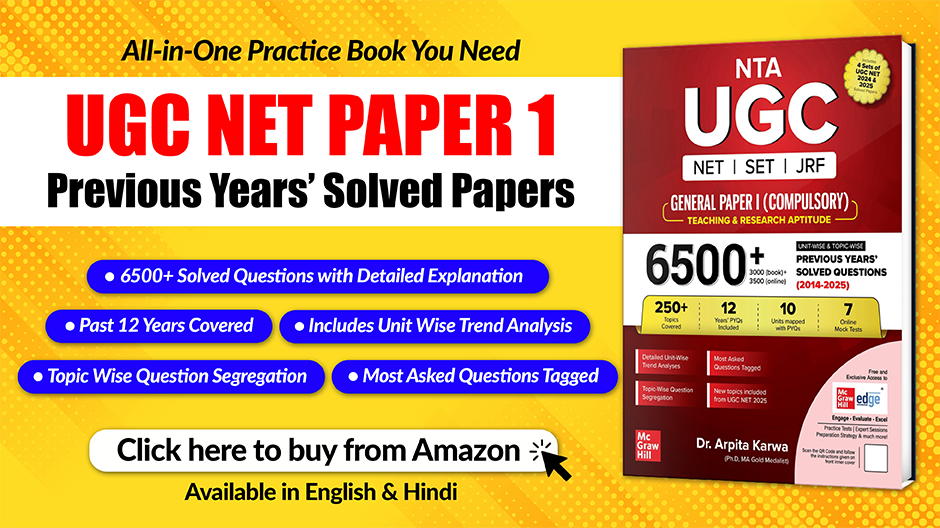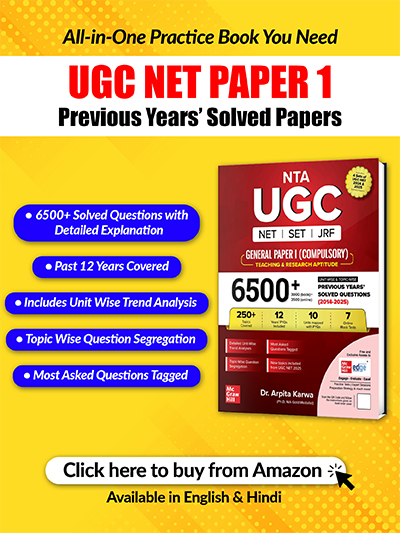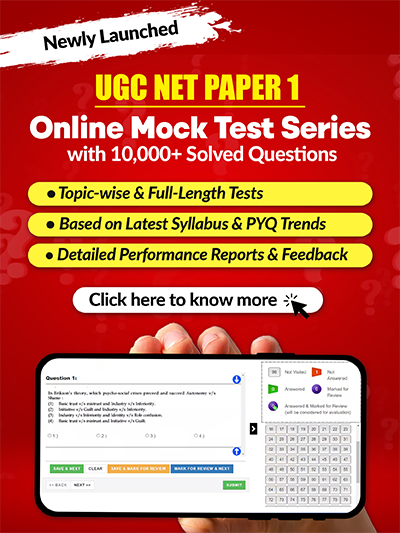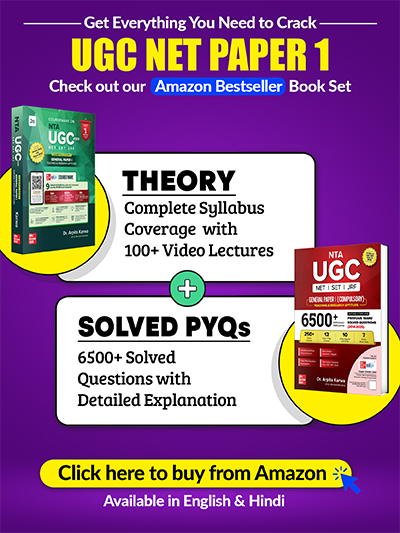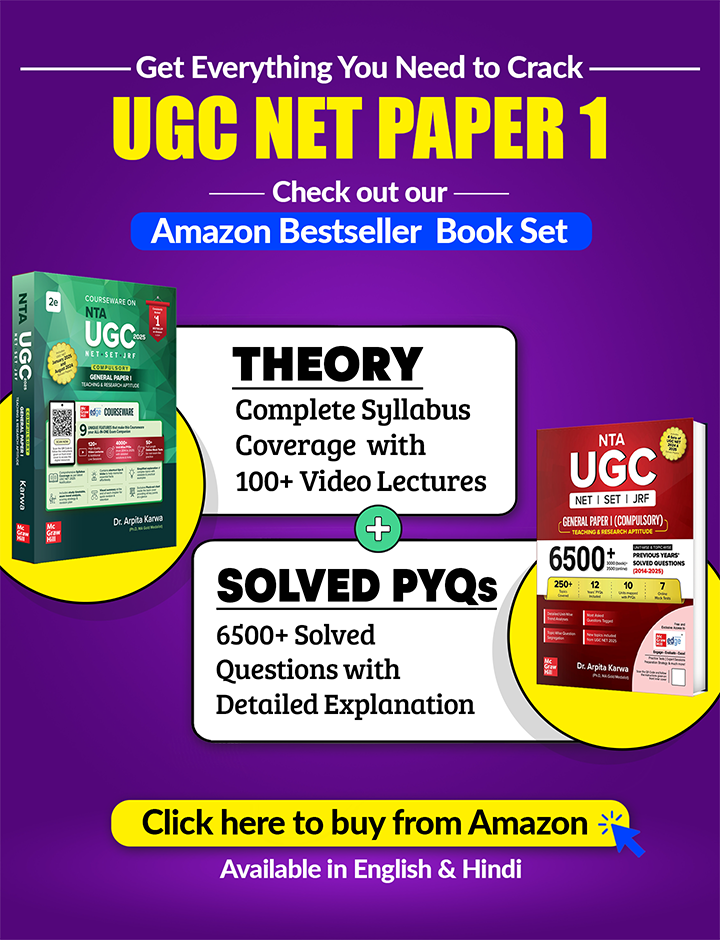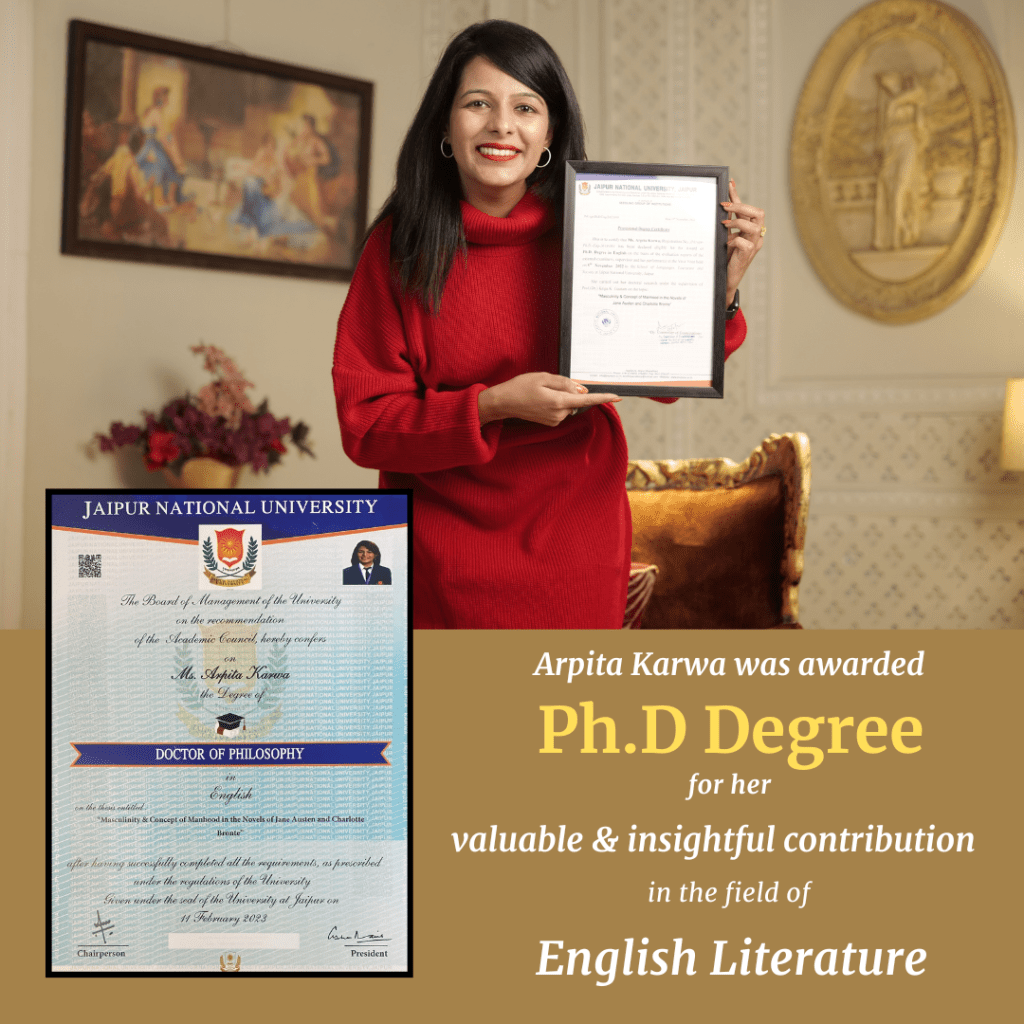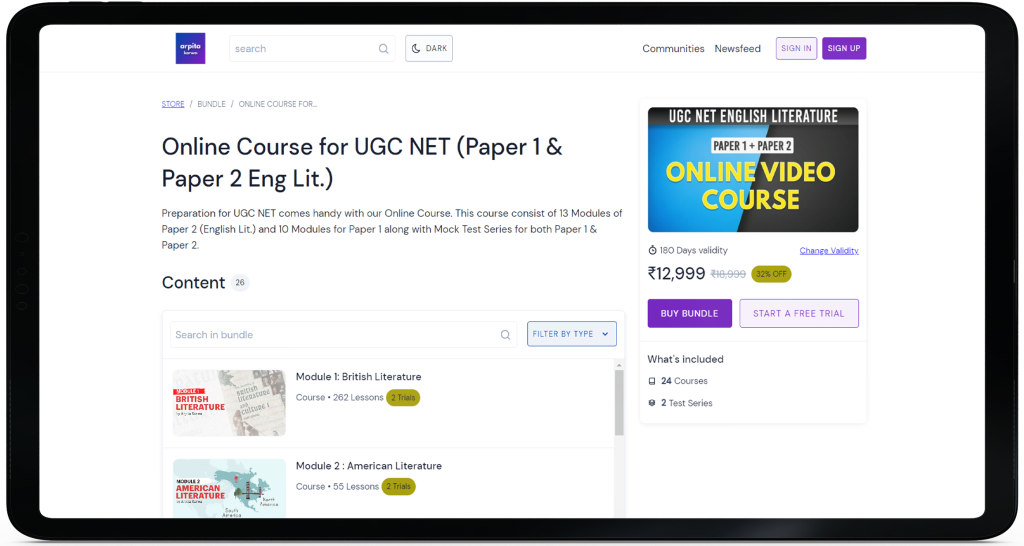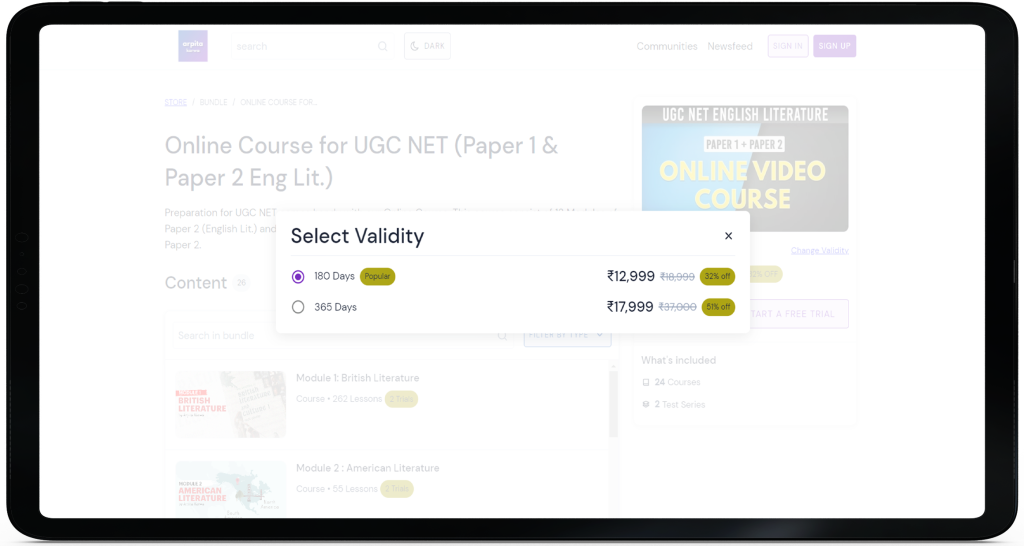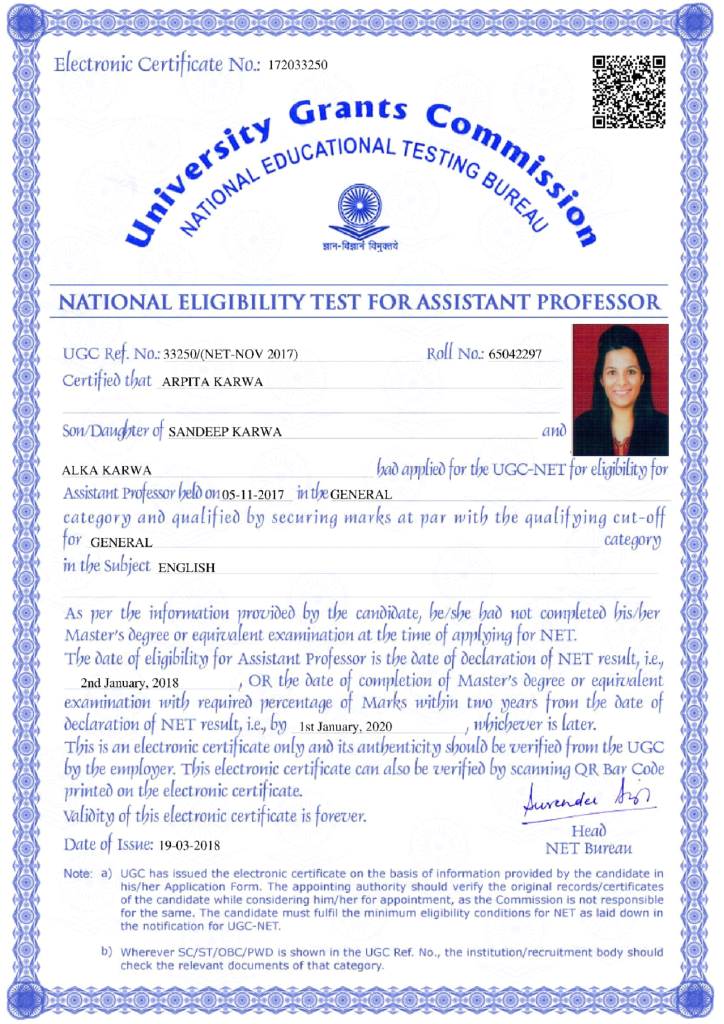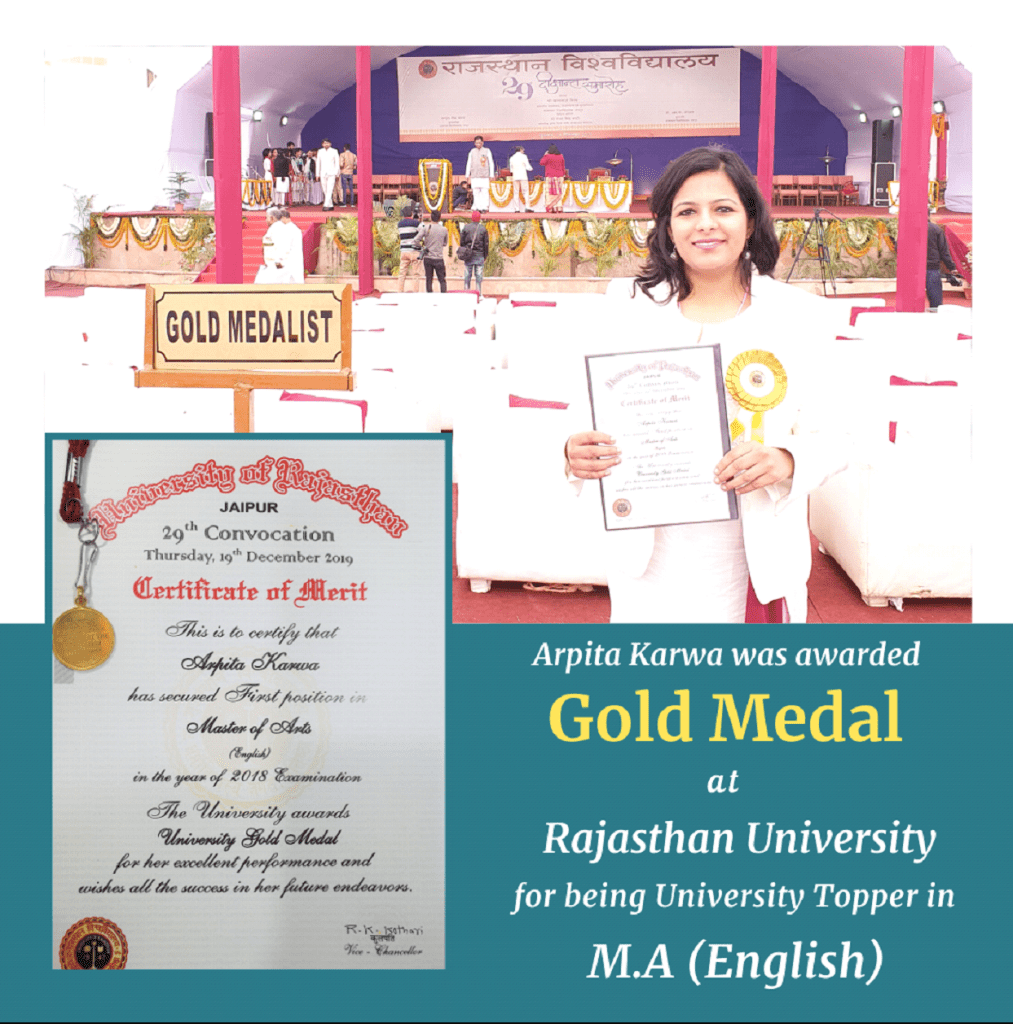October 2022 : Paper 1 (Conducted on 12th Oct 2022 : Evening Shift)
June 19, 2023 2025-08-19 9:37October 2022 : Paper 1 (Conducted on 12th Oct 2022 : Evening Shift)
October 2022 : Paper 1 (Conducted on 12th Oct 2022 : Evening Shift)
Q.1-5)
Q.1) What is the average number of students studying B.C.A. in all the five colleges together?
[1] 365
[2] 395
[3] 330
[4] 355
Correct Answer: 4
Q.2) What is the respective ratio of total number of students studying in B.C.A. in the colleges C and E together to those studying in B.A. in the colleges A and B together?
[1] 24:28
[2] 25:27
[3] 29:23
[4] 29:27
Correct Answer: 3
Q.3) What is the respective ratio of total number of students studying in B.C.A. BA and BBA, in all the colleges together?
[1] 71:67:75
[2] 67:71:75
[3] 71:68:75
[4] 75:71:68
Correct Answer: 1
Q.4) The number of students studying in B.B.A. in college C forms approximately what percent of the total number of students studying in B.BA. in all the five colleges together?
[1] 21%
[2] 39%
[3] 33%
[4] 17%
Correct Answer: 4
Q.5) Number of students studying in B.A. in college B forms what percent of total number of students studying in all the programmes together in the same college? (rounded off to two digits after decimal)
[1] 26.86%
[2] 27.27%
[3] 29.84%
[4] 32.51%
Correct Answer: 2
Q.6) The Kaufman Assessment Battery for children contains P subtests across the various ages, but a maximum of Q subtest is administered to any one child, where (P. Q) = :
[1] (10, 5)
[2] (12,8)
[3] (16, 13)
[4] (20, 15)
Correct Answer: 3
Q.7) Based on taxonomy of educational objectives, the ability to understand the meaning of material is known as
[1] Knowledge
[2] Responding
[3] Comprehension
[4] Application
Correct Answer: 3
Q.8) Which among the following are used as General Aptitude Tests?
(A) Test of Cognitive Skills (TCS)
(B) Otis — Lennon School Ability Test (OLSAT)
(C) Metropolitan Achievement Test (MAT)
(D) Boelim test of Basic Concepts Revised (BoelimR)
(E) Thurstone test
[1] A B C
[2] A B D
[3] B C D
[4] C D E
Correct Answer: 2
Q.9) For classroom testing, the length of the test will vary depending upon-
(A) Purpose of test
(B) Kinds of items used
(C) Knowledge of subject teacher
(D) Age and ability of the pupils tested
(E) Instructional objective tested
[1] A B C D
[2] A C D E
[3] A B D E
[4] B C D E
Correct Answer: 3
Q.10) Match the column:
(Name of Intelligence Test)
(A) WAIS-R
(B) WISC-R
(C) WPPSI-R
(D) Kaufman-ABC
(Applicable to age group)
(I) for ages 3 to 7 1/2
(II) for ages 6 to 16
(III) for ages 16 to 74
(IV) for ages 2 1/2 to12 1/2
[1] A-III B-II C-I D-IV
[2] A-II B-I C-IV D-III
[3] A-I B-IV C-III D-II
[4] A-IV B-III C-II D-I
Correct Answer: 1
Q.11) Statement I: If there are few extreme scores in the distribution, mode will be the most appropriate measure of central tendency.
Statement II: Mean deviation is the most sophisticated measure of dispersion of distribution.
[1] Both Statement I and Statement II are true
[2] Both Statement I and Statement II are false
[3] Statement I is true but Statement Il is false
[4] Statement I is false but Statement II is true
Correct Answer: 2
Q.12) If a researcher has to compare the means across three groups quantitatively, which among the following will be the most appropriate statistical technique for this purpose
[1] Correlation analysis
[2] Regression analysis
[3] Chi square test
[4] Analysis of variance
Correct Answer: 4
Q.13) Match the column:
(Referencing style)
A. APA style
B. MLA style
C. Chicago style
D. IEEE style
(Format of Citation)
I. author, date –(Sharma, Kailash suggested photochromatic effect (2006)
II. (Author surname, year)–(Sharma, 2006)
III. Number in square brackets– this theory was first put forward in 2006 [10]
IV. author name in text, allows footnotes — Sharma develops this argument
[1] A-III B-II C-IV D-I
[2] A-I B-III C-II D-IV
[3] A-II B-IV C-I D-III
[4] A-IV B-I C-III D-II
Correct Answer: 3
Q.14) Scheme for Trans-disciplinary Research for India’s Developing economy’ was initiated by –
[1] CSIR
[2] DST
[3] ICSSR
[4] UGC
Correct Answer: 4
Q.15) Error can creep into interview data due to following factors :
(A) Failure to record answers accurately
(B) Influencing the response of the respondents
(C) Interviewees are intelligent
(D) Interviewer is able to explain the question well
(E) Failure to establish appropriate interview environment
[1] A B C
[2] A B E
[3] B C D
[4] C D E
Correct Answer: 2
Q.16) When the receiver assigns a meaning to a language symbol in communication, it is called-
[1] Response
[2] Perception
[3] Reverse labeling
[4] Meaning mapping.
Correct Answer: 3
Q.17) A teacher, to be an effective communicator, should resort to-
(A) Acquisition of elitist background
(B) Natural flow of information
(C) Voluntary support to learning
(D) A system of immediate and regular feedback
(E) Convoluted presentations
[1] A B C
[2] B C D
[3] C D E
[4] A D E
Correct Answer: 2
Q.18) Statement I: The ritualistic view of communication is that it is not used for the promotion of self-interest.
Statement II: In contrast, the transmission mode of communication considers it as an instrumental act.
[1] Both Statement I and Statement II are true
[2] Both Statement I and Statement II are false
[3] Statement I is true but Statement Il is false
[4] Statement I is false but Statement II is true
Correct Answer: 1
Q.19) Match the column:
(A) Paralanguage
(B) Proxemics
(C) Colour
(D) Artifact
(I) Objects and images with cultural context
(II) Hesitation noise
(III) Personal space
(IV) Different moods
[1] A-II B-III C-IV D-I
[2] A-III B-IV C-I D-II
[3] A-IV B-I C-II D-III
[4] A-I B-II C-IV D-III
Correct Answer: 1
Q.20) Statement I: The length of a tree increases at the rate of 5% every year on its previous year’s length. If it is 2.0 feet now, it will increase 0.31525 feet in three years.
Statement II: A vendor sells an item for 56 making a profit of 40%. The cost price of the item is 40.
[1] Both Statement I and Statement II are true
[2] Both Statement I and Statement II are false
[3] Statement I is true but Statement Il is false
[4] Statement I is false but Statement II is true
Correct Answer: 1
Q.21) Every hour the number of bacteria in a sample doubles. If the original number of bacteria is 100, and 50 bacteria are removed every two hours, after five hours, there are
[1] 2500 bacteria
[2] 2700 bacteria
[3] 1350 bacteria
[4] 2800 bacteria
Correct Answer: 2
Q.22) Ramesh goes to North, then turns right. then turns right again and then goes to the left. In which direction is Ramesh in now?
[1] North
[2] South
[3] East
[4] West
Correct Answer: 3
Q.23) (A) A train traveling 180 km/hr took 5.4 seconds to cross a stationary man. Length of the train is 250 m.
(B) If a bus covers 172 km in 4 hours. the speed of the bus is 154.8 m/s.
(C) If 25 X + 25 Y = 110, the average of X and Y is 2.2.
Which of the above statements is/are correct?
[1] B C
[2] A B
[3] C
[4] A C
Correct Answer: 3
Q.24) Assertion (A): In a valid categorical syllogism, if a term is distributed in the conclusion, then it must be distributed in the premises.
Reason (R): The conclusion of a valid argument cannot assert any more than is contained in the premises.
[1] Both A and R are true and R is the correct explanation of A
[2] Both A and R are true but R is NOT the correct explanation of A
[3] A is true but R is false
[4] A is false but R is true
Correct Answer: 1
Q.25) Identify the formal fallacy committed in the argument :
All criminals are human beings.
Al saints are human beings
Therefore all saints are criminals.
[1] Fallacy of illicit process of Major Term
[2] Fallacy of illicit process of Minor Team
[3] Fallacy of undistributed Middle Term
[4] Fallacy of Four Terms
Correct Answer: 3
Q.26) Identify the fallacy committed in the following argument :
An elephant is an animal: therefore, a small elephant is a small animal
[1] Argument from Ignorance
[2] Fallacy of Irrelevant Conclusion
[3] Fallacy of False Cause
[4] Fallacy of Equivocation
Correct Answer: 4
Q.27) Statement I – The Nyaya system does not accept Arthapatti as an independent source of valid knowledge.
Statement II: The Nyaya system reduces Arthapatti to an inference of anvayi type.
[1] Both Statement I and Statement II are true
[2] Both Statement I and Statement II are false
[3] Statement I is true but Statement Il is false
[4] Statement I is false but Statement II is true
Correct Answer: 3
Q.28) Assertion (A): In Samanyatodrsta inference the universal relation between the major and middle term depends on causal uniformity.
Reason (R): ‘The middle term of the inference is related to the major term neither as a cause nor as an effect.
[1] Both A and R are true and R is the correct explanation of A
[2] Both A and R are true but R is NOT the correct explanation of A
[3] A is true but R is false
[4] A is false but R is true
Correct Answer: 4
Q.29) With respect to Computers, BIOS is an acronym for :
[1] Binary Input Output Source
[2] Basic Input Output Support
[3] Binary Input Output System
[4] Basic Input Output System
Correct Answer: 4
Q.30) Identify the correct arrangement of the following storage capacities in the decreasing order-
(A) 10 Mega Bytes
(B) 10 Terabytes
(C) 10 Exabytes
(D) 10 Yottabytes
[1] D C B A
[2] C D B A
[3] C B D A
[4] B C D A
Correct Answer: 1
Q.31) Statement I: Twitter is the most well-known microblogging site.
Statement II: YouTube is the largest video-sharing site.
[1] Both Statement I and Statement II are true
[2] Both Statement I and Statement II are false
[3] Statement I is true but Statement Il is false
[4] Statement I is false but Statement II is true
Correct Answer: 1
Q.32) Which of the following file formats are suitable for distributing video files across the internet?
(A) WMV
(B) WAV
(C) MIDI
(D) MP3
(E) MP4
[1] A D
[2] A E
[3] D E
[4] B C
Correct Answer: 2
Q.33) Match the column:
(Computer Terms)
(A) OMR
(B) MICR
(C) RAM
(D) Firewall
(Description)
(I) Used by banks to read codes on a cheque
(II) prevents unauthorized access to a computer network
(III) Marks multiple-choice questions
(IV) Stores programs and data temporarily
[1] A-III B-I C-II D-IV
[2] A-III B-IV C-I D-II
[3] A-III B-I C-IV D-II
[4] A-I B-III C-IV D-II
Correct Answer: 3
Q.34) Which of the following are true about Joint Forest Management (JFM)?
(A) Its concept was introduced through the Environment (Protection) Act. 1986
(B) It involves both state forest department and local community
(C) Women also participate in this
(D) It varies from state to state and is known by different names in different languages
[1] A B C
[2] B C D
[3] A C D
[4] A B C D
Correct Answer: 2
Q.35) Disaster management plan was launched by ministry of Home Affairs in-
[1] 2005
[2] 2011
[3] 2016
[4] 2020
Correct Answer: 3
Q.36) Environmental problems associated with soils are-
(A) Nutrient leaching
(B) Metal contamination
(C) Salinity and Alkalinity
(D) Ozone depletion
(E) Fine aerosols in ambient air
[1] A B C E
[2] B C E
[3] A B C D
[4] A B C
Correct Answer: 4
Q.37) Assertion (A): Geothermal energy is not a renewable source of energy.
Reason (R) The processes for extracting and using geothermal power are more akin to those for centralized fossil fuels than the dispersed renewable supplies of the natural environment.
[1] Both A and R are true and R is the correct explanation of A
[2] Both A and R are true but R is NOT the correct explanation of A
[3] A is true but R is false
[4] A is false but R is true
Correct Answer: 4
Q.38) What is the correct sequence of concentration of various components of producer gas?
A. CH4
B. CO2
C. CO
D. N2
[1] D C A B
[2] D C B A
[3] C D A B
[4] C D B A
Correct Answer: 2
Q.39) Mahadev Govind Ranade, Gopal Ganesh Agarkar, Gopal Krishna Gokhale were known to insist on the idea.
[1] Keep women unenlightened in order to preserve the superiority of men
[2] Provide equal educational opportunities to both boys and girls. through co-educational institutions
[3] All domestic work should be done by women alone
[4] If women study science they would lose faith in religion
Correct Answer: 2
Q.40) The national knowledge commission was established in the year-
[1] 1998
[2] 2000
[3] 2005
[4] 2007
Correct Answer: 3
Q.41) Assertion (A): Education enables upward social economic mobility and is a key for escaping poverty. Over the past decade, major progress was made towards increased access to education and enrolment at all levels particularly for girls.
Reason (R): The global pandemic has far-reaching consequences that may jeopardize hard won gains made in improving school education.
[1] Both A and R are true and R is the correct explanation of A
[2] Both A and R are true but R is NOT the correct explanation of A
[3] A is true but R is false
[4] A is false but R is true
Correct Answer: 2
Q.42) Statement I: Dewey equated schools to communities and education to a social process.
Statement II: Chomsky expressed that the ultimate aim of education is production of individuals which are different from each other in terms of quality.
[1] Both Statement I and Statement II are true
[2] Both Statement I and Statement II are false
[3] Statement I is true but Statement Il is false
[4] Statement I is false but Statement II is true
Correct Answer: 3
Q.43) Which of the following characteristics pertains to Non-conventional learning?
[1] One campus education with fixed time
[2] Teacher-centered learning
[3] Requirement of regular attendance
[4] No fixed curriculum
Correct Answer: 4
Q.44-48) Read RC Passage to Answer:
Walter Lippman refers to stereotypes as a projection on to the ‘world’. Although he is not concerned primarily to distinguish stereotypes from modes of representation whose principal concern is not the world, it is important for us to do so, especially as our focus is representation in media fictions, which are aesthetic as well as social constructs. In this perspective, stereotypes are a particular sub-category of a broader category of fictional characters, the type. Whereas stereotypes are essentially defined by their aesthetic function, namely a mode of characterisation in fiction. The type is any character constructed through the use of a few immediately recognisable and defining traits, which do not change or ‘develop’ through the course of the narrative and which point to general, recurrent features of the human world. The opposite of the type is the novelistic character, defined by a multiplicity of traits that are only gradually revealed to us through the course of the narrative, a narrative which is hinged on the growth or development of the character and is thus centered upon the latter in her or his unique individuality, rather than pointing outwards to a world. In any society, it is the novelistic character that is privileged over the type, for the obvious reason that the society’s privileges-at any rate, at the level of social rhetoric the individual over the collective or the mass. For this reason, the majority of fictions that address themselves to general social issues tend nevertheless to end up telling the story of a particular individual, hence returning social issues to purely personal and psychological ones. Once we address ourselves to the representation and definition of social categories, for example, alcoholics, we have to consider what is at stake in one mode of characterization than another.
Q.44) Representations that appear in the media fictions are-
[1] Aesthetic constructs
[2] Reflection of real world
[3] Defining characters
[4] Materialistic characterisation
Correct Answer: 1
Q.45) Stereotypes are characterized by-
[1] Immediate recognition of people
[2] Fictional narration
[3] Absence of social constructs
[4] Broadness of function
Correct Answer: 2
Q.46) Any character in the type will reflect-
[1] The illusory world
[2] The changeable traits of individuals
[3] The unchangeable traits of individuals
[4] The sub-categories of representation
Correct Answer: 3
Q.47) Why the novelistic character is privileged over the type?
[1] Due to the demand of the narrative
[2] Because of single definable trait
[3] As it is part of a sub-category called stereotype
[4] Because of preference of social rhetoric to the individual.
Correct Answer: 4
Q.48) Most novelists while addressing social issues, prefer fictionalisation of-
[1] The masses
[2] Social sub-categories
[3] Social privileges
[4] Personal issues
Correct Answer: 4
